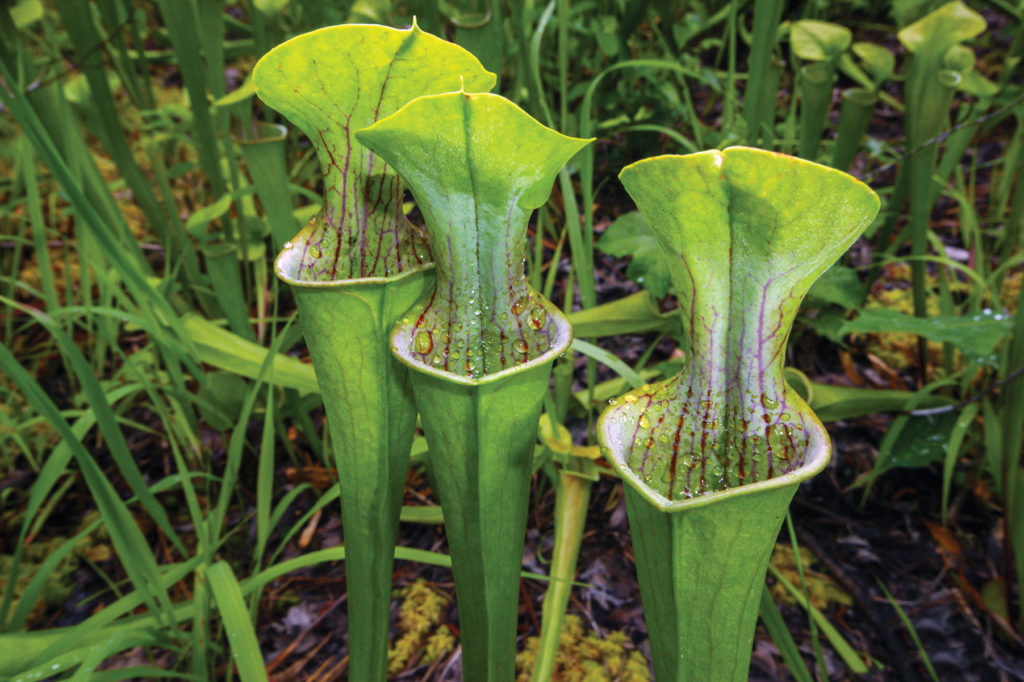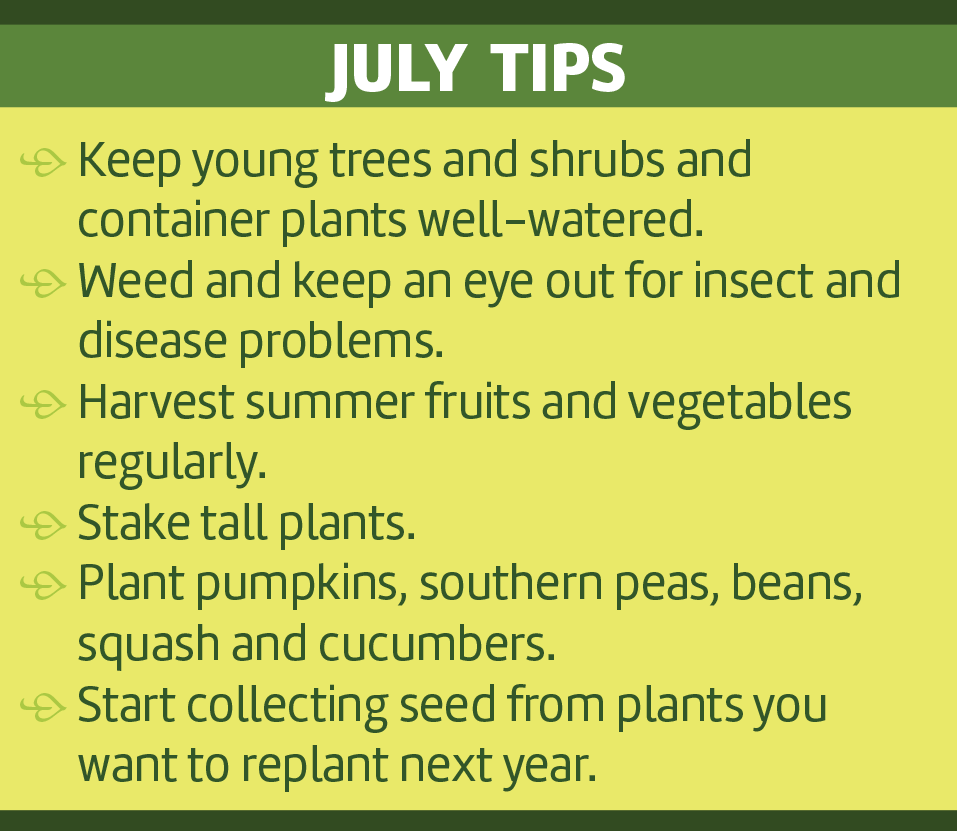In a few locations here in Alabama, wild pitcher plants are currently raising their vase-shaped leaves above the soggy floors of seepage bogs to create a unique vista of shape, texture and color. It’s a stunning scene that’s become harder and harder to experience, but one we can enjoy in small snapshots in our own yards and gardens.
Pitcher plants belong to a family of flora that also includes butterworts, bladderworts, sundews and other intriguing plants that use clever traps to catch and then digest insects and other small animals. This protein-rich diet allows carnivorous plants to thrive in bogs, areas of freshwater wetlands where the slow decay of vegetation and organic matter creates a soft, squishy peat turf and where the constant flow of water through the peat and surrounding soil washes away nutrients. What remains is a wet, highly acidic and nutrient-poor growing environment that’s inhospitable to many plants but is perfect for pitcher plants, their carnivorous kin and a diverse array of other plants including wildflowers, asters, mosses, sedges and orchids.

These bogs not only support all these different plant species, they also provide habitat for a wide variety of wildlife species and are extremely efficient at sequestering carbon. Unfortunately, bogs are disappearing due to adverse environmental and climate changes and human activities, and their demise has precipitated the demise of many bog-loving plants.
Among those are the endangered Alabama canebrake pitcher plant, found only in two counties of Alabama, and the green pitcher plant, found in northwest Alabama. Other pitcher plant species are also at risk from this habitat loss as are several of Alabama’s 50 native bog-loving orchid species.
Preservation work is ongoing to protect our remaining bogs (Week’s Bay, Splinter Hill and Gulf State Park in Baldwin County among them) and bog gardens have been created in several Alabama public garden facilities including Birmingham, Dothan, and Mobile botanical gardens and Auburn University’s Davis Arboretum. And with a little effort, some of these plants can also grace our home garden landscapes.
According to Patrick Thompson, a native plant specialist at the Davis Arboretum, successful bog gardening is all about recreating the conditions that bog-loving plants enjoy in the wild. For pitcher plants, that means an area that has a peat-sand soil mixture and plenty of sunshine and flowing water. While wet areas and the damp banks of ponds and lakes may be able to support pitcher plants, the best way to grow them is in plastic-lined bog gardens, which require a degree of construction and careful engineering. Plans are available from a variety of sources including from the Alabama Wildlife Federation (visit alabamawildlife.org and search for “bog garden”). Help may also be available from local nurseries and public gardens.

If building a whole garden from scratch is a bit too intimidating, Thompson suggested starting out with a few hardy pitcher plants, thousands of developed varieties of which are now available through many retailers. (Never collect them from the wild!) Put them in a container filled with a peat-sand soil mixture and give them a continuous supply of water — Thompson suggested placing them where they can get a steady drip from rain barrels or even condensation from air conditioning units and they will thrive.
Or make a more diverse ecosystem by adding St. John’s wort, orchids, asters, wildflowers, grasses and sedges, native irises and other plants that do well in wet conditions to the container. Then sit back and enjoy the beauty of the bog in your own garden space.
Katie Jackson is a freelance writer and editor based in Opelika, Alabama. Contact her at [email protected].




